Global Forestry and Logging Market 2024: Trends & Growth Forecast
- September 9, 2024
- 0 comment
The global forestry and logging market is a vital pillar of the economy, supporting industries like construction, paper production, and even renewable energy. Beyond its economic significance, this market plays a key role in ecological conservation by influencing forest management practices and carbon sequestration efforts.
Recent years have brought notable changes to the industry, driven by evolving consumer demands, rapid technological advancements, and a growing emphasis on sustainable forestry market trends. These shifts are transforming the way businesses operate and redefining the industry’s role in the global economic landscape.
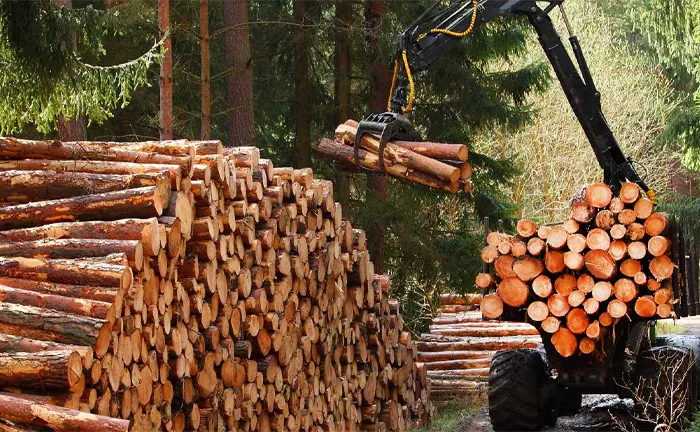
As we approach 2024, stakeholders must navigate a dynamic environment shaped by emerging trends, from innovative logging technologies to stricter environmental regulations that encourage sustainable practices. With the forestry market growth expected to accelerate, understanding the industry’s key drivers and challenges is more important than ever.
This guide provides an in-depth forestry and logging market analysis, exploring trends, market forecasts, and growth opportunities. Whether you’re a policymaker, investor, or business leader, staying informed about the timber market outlook and logging industry trends will help you position yourself for success in 2024 and beyond.
Table of Contents:
- Market Drivers
- Challenges Facing the Industry
- Impact of Climate Change
- Growth Opportunities
- Regional Analysis
- Economic Impacts
- Sustainability and Certification
- Technology and Innovation
- Future Outlook and Predictions
Global Market Size and Current Status
As of 2023, the global forestry and logging market is valued at approximately USD 900 billion, reflecting consistent growth over the past decade. This expansive industry encompasses activities such as timber harvesting, forest management, and the production of wood-based goods, which are essential to industries like construction and paper manufacturing.
Key players such as Weyerhaeuser, West Fraser Timber, and Rayonier dominate the market alongside regional companies that collectively shape the industry’s dynamics. These operations span continents, with significant forestry activities concentrated in resource-rich countries like Brazil, Canada, Russia, and Indonesia. This global forestry market size reflects the pivotal role of these regions in meeting worldwide demand for timber and forest products.
Shaping the Market
Several trends are anticipated to shape the global forestry and logging market in 2024, each driven by evolving industry practices and global economic conditions.
- Technological Advancements in Forestry Equipment: Emerging technologies such as drones, GPS mapping, and automated harvesting machinery are revolutionizing forestry operations. These advancements improve efficiency while minimizing environmental impact by enabling sustainable forestry market trends. By leveraging precise tools, logging operations are becoming more eco-friendly, aligning with the growing demand for responsible practices.
- Sustainable Practices and Certification: Environmental awareness continues to rise, prompting a stronger focus on sustainable forestry. Certification programs like the Forest Stewardship Council (FSC) and the Programme for the Endorsement of Forest Certification (PEFC) are increasingly valued by both businesses and consumers. As demand for certified wood products grows, these programs help ensure wood originates from responsibly managed forests. In 2024, sustainable forestry market trends and consumer-driven demand for certified wood will play a key role in shaping the timber market outlook.
Market Drivers
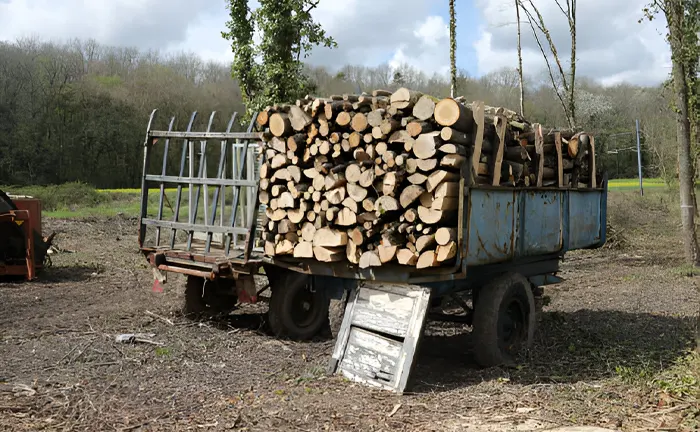
- Rising Demand for Wood and Wood-Based Products: With growing populations and accelerating urbanization, the global demand for wood and wood-based products continues to climb. Items like furniture, construction materials, and paper are essential for everyday life and industrial use. This trend is particularly evident in emerging markets, where infrastructure development is fueling significant growth. The forestry market growth in these regions highlights the pivotal role of timber in meeting the demands of expanding economies.
- Increasing Urbanization and Infrastructure Development: Rapid urbanization is spurring a surge in construction projects, particularly in regions like Asia-Pacific and Africa. This boom has led to increased demand for timber and other forest products, creating vast opportunities for the global forestry and logging market. As urban expansion progresses, the industry’s ability to meet infrastructure needs will be critical. These developments contribute to a positive timber market outlook, positioning the industry for sustained logging industry growth.
Challenges Facing the Industry
Despite the positive outlook, the forestry and logging industry faces several challenges that could impact its growth:
- Environmental Concerns and Deforestation: The industry is under scrutiny for its role in deforestation and habitat destruction, particularly in regions like the Amazon. Balancing the need for economic growth with environmental preservation is a significant challenge for the industry, requiring stringent regulations and innovative solutions.
- Regulatory and Compliance Issues: The industry must navigate a complex web of regulations aimed at protecting forests and ensuring sustainable practices. Compliance with these regulations can be costly and time-consuming, particularly for smaller operators with limited resources.
Impact of Climate Change
Climate change is profoundly affecting the global forestry and logging market, reshaping ecosystems and posing challenges to the sustainability of logging operations. The increasing frequency of extreme weather events such as wildfires, hurricanes, and droughts disrupts forest ecosystems, threatening tree health and reducing timber availability. Additionally, shifting temperature and precipitation patterns are altering the geographic distribution of tree species, complicating forest management efforts.
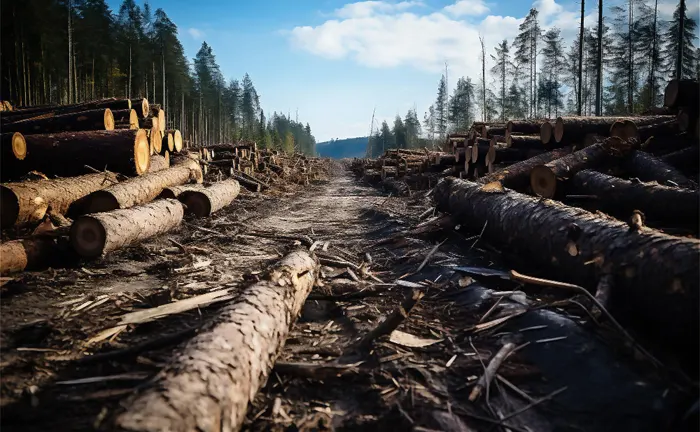
To address these challenges, the industry is adopting innovative adaptation strategies. These include developing resilient tree species that can withstand harsh climate conditions and implementing sustainable forest management practices to reduce environmental impacts. As we move into 2024, climate change and its effects on forestry market growth will continue to be critical areas of focus. Embracing these measures will not only safeguard forests but also support a positive timber market outlook amid global environmental changes.
Growth Opportunities
The global forestry and logging market is ripe with growth opportunities, particularly in emerging markets and through the adoption of innovative techniques:
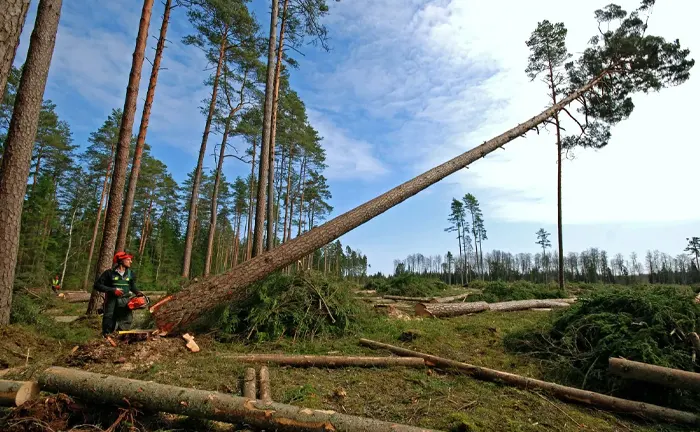
- Emerging Markets in Asia and Africa: Regions like Asia and Africa are experiencing rapid economic growth, leading to increased demand for timber and wood products. Countries such as China, India, and Nigeria are expected to be key drivers of market expansion, offering significant opportunities for investment and development.
- Innovations in Forestry Techniques: The adoption of new forestry techniques, such as selective logging, agroforestry, and reforestation, is creating opportunities for sustainable growth. These practices not only enhance productivity but also contribute to environmental conservation.
Regional Analysis
The forestry and logging market exhibits distinct regional dynamics, with varying trends and growth prospects across different parts of the world:
- North America Market Overview: North America remains a dominant player in the global forestry market, with extensive forest resources and well-established industry practices. The region is characterized by a strong focus on sustainable forestry, supported by robust regulatory frameworks and a high level of certification.
- European Market Dynamics: Europe is another key market, driven by demand for timber in construction and renewable energy sectors. The region is also a leader in sustainable forestry, with a high percentage of forests certified under FSC or PEFC standards.
- Asia-Pacific Growth Potential: The Asia-Pacific region is expected to witness the highest growth in the forestry and logging market, fueled by rapid industrialization and urbanization. Countries like China and India are investing heavily in infrastructure, driving demand for wood and wood-based products.
Economic Impacts
The forestry and logging industry is a key contributor to the global economy, driving GDP growth and creating significant employment opportunities, particularly in rural communities. In 2024, the industry is projected to generate considerable economic value, with forestry operations serving as a primary income source in resource-rich regions. Beyond direct contributions, the sector supports ancillary industries such as transportation, manufacturing, and retail, amplifying its influence on the global forestry and logging market. These interconnections highlight the industry’s vital role in sustaining logging industry growth and boosting regional economies.
Sustainability and Certification
Sustainability remains a cornerstone of the modern forestry and logging market, aligning with growing consumer demand for environmentally responsible practices. Certified sustainable forestry ensures that forests are managed responsibly, preserving biodiversity and protecting ecosystems. Programs like the Forest Stewardship Council (FSC) and the Programme for the Endorsement of Forest Certification (PEFC) set global standards for sustainable forest management. In 2024, the rising demand for certified wood products driven by consumer awareness and stricter environmental regulations is expected to shape sustainable forestry market trends. Certification not only safeguards ecosystems but also provides access to international markets, ensuring a positive timber market outlook for businesses adopting these practices.
Technology and Innovation

Technological advancements are revolutionizing the forestry and logging industry, offering innovative tools and methods to enhance efficiency and sustainability. Robotics, AI, and advanced machinery are increasingly integrated into forestry operations, enabling precise harvesting, reducing waste, and minimizing environmental impacts. By 2024, the adoption of these technologies is expected to grow, fostering logging industry trends that prioritize sustainable growth. From automated harvesting systems to AI-driven forest monitoring, innovation is paving the way for a more efficient and eco-friendly forestry and logging market.
Future Outlook and Predictions
The global forestry and logging market is poised for steady growth through 2024, supported by technological advancements, rising demand for wood products, and the growing importance of sustainable practices. While challenges such as climate change, stringent regulations, and environmental concerns persist, the industry’s future looks promising. By leveraging sustainable forestry market trends and embracing innovation, stakeholders can capitalize on the expanding timber market outlook and unlock opportunities for long-term success.
Regulatory Environment
Navigating the regulatory environment is a critical aspect of operating within the forestry and logging industry. Regulations focused on forest conservation, sustainable management, and the prevention of illegal logging vary significantly across regions. As governments respond to climate change and deforestation, compliance with stricter environmental protections will remain a priority in 2024. For the industry, adapting to these regulations is essential for sustaining forestry market growth and maintaining access to global markets.
Investment Opportunities
The forestry and logging market offers compelling investment opportunities, particularly in emerging markets and innovative technologies. Areas such as sustainable forestry, timber production, bioenergy, and wood processing present attractive prospects. Investors can benefit from the increasing demand for certified wood products and sustainable practices while contributing to logging industry growth. However, it is essential to assess risks, including regulatory compliance, market volatility, and geopolitical challenges, when making investment decisions.
Case Studies and Success Stories
Industry leaders are setting benchmarks for sustainability and innovation in the global forestry and logging market. For instance, Weyerhaeuser’s comprehensive sustainability strategy emphasizes reforestation and advanced technology integration, serving as a model for responsible forestry. Similarly, companies in emerging markets like Brazil and Indonesia are achieving success through sustainable practices and market expansion, reflecting the potential for growth in these regions. These examples underscore how forestry and logging market analysis can highlight pathways for success.
Concluding Thoughts
The forestry and logging industry stands at a transformative juncture, with significant opportunities for growth and innovation in 2024. While challenges such as climate change, regulatory pressures, and environmental concerns remain, the industry’s future outlook is positive. By embracing sustainable forestry market trends, adopting advanced technologies, and exploring opportunities in emerging markets, stakeholders can position themselves for success in the evolving timber market outlook.
Frequently Asked Questions (FAQs)
- What are the current trends in the forestry & logging market?
The key trends include technological advancements in forestry equipment, sustainable practices, and the increasing demand for certified wood products. - How does climate change impact the industry?
Climate change affects forest health, alters species distribution, and increases the frequency of extreme weather events, posing significant risks to forestry operations. - Which regions are seeing the most growth in forestry & logging?
Asia-Pacific and Africa are experiencing rapid growth due to urbanization and infrastructure development, while North America and Europe continue to be major markets. - What role does technology play in modern forestry?
Technology is transforming forestry operations through the use of robotics, AI, and advanced machinery, improving efficiency, precision, and sustainability. - How are environmental regulations affecting the industry?
Environmental regulations are tightening, requiring companies to adopt sustainable practices, obtain certifications, and comply with international standards. - What are the main challenges faced by the global forestry & logging market?
The main challenges include environmental concerns, regulatory compliance, and the impact of climate change on forest ecosystems.
We trust this comprehensive analysis will help you navigate the evolving landscape of the global forestry and logging market in 2024, equipping you with the insights needed to capitalize on emerging trends and opportunities. Have you observed any of these trends in your region, or have insights into the challenges facing the industry? Share your experiences and join the conversation below. Your input could provide valuable perspectives for others in the industry and contribute to shaping future discussions. Don’t forget to share this article with colleagues, investors, and industry professionals who could benefit from these insights!

James Wilson
Forestry AuthorJames Wilson has over 15 years of experience in forestry economics, specializing in sustainable practices, investment opportunities, and financial management. He has contributed to notable publications like "Forestry Today" and "EcoFinance Journal" and is known for providing practical and insightful advice. With a degree in Environmental Economics, James stays updated through continuous learning and active participation in industry discussions. Outside work, he enjoys hiking and nature photography, bringing a well-rounded perspective to his professional role.


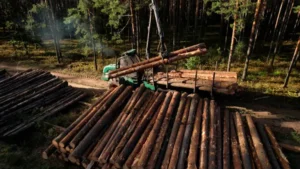
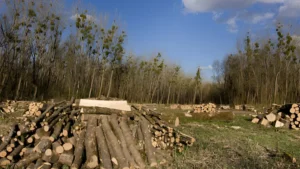
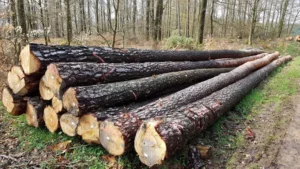

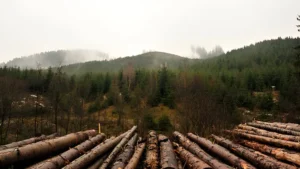
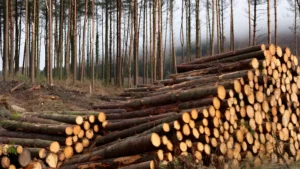


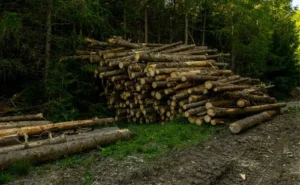
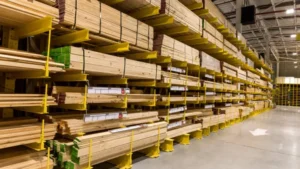

Leave your comment